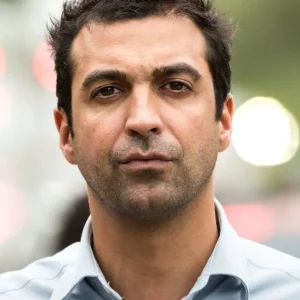Many individuals experience language and communication difficulties following a traumatic brain injury (TBI). Practicing targeted speech therapy activities for TBI can help survivors regain the ability to communicate effectively.
As aphasia, dysarthria, and apraxia of speech are common secondary effects of brain injury, many TBI survivors have difficulties verbally connecting with others. To address this, speech therapists may use interventions ranging from improving strength and coordination of the facial muscles used in forming words to enhancing higher-level cognitive functions needed to communicate.
This article will provide examples of some of the best speech therapy activities for TBI survivors. While it is recommended to work directly with a speech therapist, this article is a great starting point. Use the links below to jump directly to any section.
- How can a brain injury affect speech?
- Speech therapy activities for aphasia
- Facial strengthening activities for dysarthria
- Articulation and coordination activities for apraxia
How Can a Brain Injury Affect Speech?
Before introducing some of the best speech therapy activities for TBI, it helps to understand how speech works. How are thoughts in the mind translated into words that others can understand?
On the physical level, speaking involves air passing through the vocal cords to produce sound, which the muscles in the mouth and tongue then form into words. Mentally, the brain is connecting words with meaning, coherently connecting words into sentences, comprehending responses from others, and constantly adjusting to those responses.
With this in mind, it is easy to see why performing this seemingly simple action requires a concerted effort from several different areas of the brain. During a conversation, the brain must:
- Coordinate the muscles to form words, breathe, and swallow at the right time
- Listen and pay attention to what the other person is saying
- Process facial expressions and body language
- Recall what the person said and produce an appropriate response
Depending on which area of the brain is injured, one or all of these skills could be affected. This is why speech therapists use assessments to identify which speech skills are impaired, so they can focus on activities that will best promote recovery.
Speech Therapy Activities for Improving Aphasia
Aphasia involves difficulties with producing or comprehending language. Expressive aphasia involves problems with producing language, while receptive aphasia involves trouble with language comprehension. Individuals may also experience difficulties in both of these areas, referred to as global aphasia.
There are many speech therapy activities for TBI that can be used to address aphasia, including:
Games
Playing games can allowing individuals to practice language skills in an engaging environment. Most games have some language components, but these can help target specific language skills:
- Pictionary/Charades: helps with word-finding
- Scattergories: addresses word-finding and categorization skills
- Taboo: challenges both expressive and receptive language skills; can adapt the game by combining words with non-verbal gestures as needed
Singing
Many people who are unable to speak due to aphasia are still able to sing. This is because singing involves the more creative right-hemisphere of the brain, rather than relying solely on the areas of the brain that house language skills. Therefore, some of the best speech therapy activities for TBI involve music.
- Try listening to vocal music. Even simply listening can activate the language centers of the brain.
- Hum along with a simple song, like “Happy Birthday”, or even a popular but slow-paced song, like Queen’s “We are the Champions”. Clap or tap along to the music.
- Practice singing along. As singing skills improve, try singing a sentence, such as “What would you like for dinner?”.
While different than traditional exercises, these TBI speech therapy activities can greatly improve language skills. Activities tend to be more engaging than rote exercises, motivating individuals to practice more regularly to boost recovery.
Facial Strengthening Speech Therapy Activities for TBI
When a TBI damages the areas of the brain responsible for the muscles involved in speech, individuals may start to slur their words. This condition is known as dysarthria. The most effective way to overcome dysarthria is to retrain the muscles through facial strengthening activities.
Some of the best TBI speech therapy activities for orofacial strengthening are included below. Try to complete 10 repetitions of each exercise. As the facial muscles get stronger, work up to 20 repetitions, or consider doing a few sets of each exercise per day.
“Pucker Up!”
- Pucker the lips as if giving someone a kiss; hold for 5 seconds.
- Pucker the lips again, then move the lips from side to side while still holding the pucker. Try to keep the tongue still.
- Close the lips tightly, and say “mm..mm..mm” then “p…p…p” then “b…b..b.”
Cheek Puff
- Take a deep breath through the nose, puffing the cheeks out. Hold the air in the cheeks for 5 seconds, then exhale slowly.
- Take another deep breath, only holding the air only in one cheek, then moving the air to the other cheek.
Tongue Strengthening
These activities require a flat wooden stick to push the tongue against, such as a popsicle stick or tongue depressor. To prevent any choking incidents, it is recommended to have assistance, at least for the first few trials.
- Stick the tongue straight out. Press the tip of the tongue against the flat side of stick.
- Stick the tongue out again, then press the stick in towards the mouth while pushing the tongue hard against the stick, as if trying to force it away. Hold for 5 seconds.
- Place the stick on the top of your tongue and press down, like when a doctor examines the throat. Then, push the tongue up against the stick while keeping the stick still, holding for 5 seconds.
Doing these speech therapy activities alongside a family member or friend can make them more enjoyable, and even entertaining. Although these exercises can be helpful, it is recommended to work with a speech therapist to learn more personalized activities focused on improving dysarthria.
Speech Therapy Activities for Apraxia after TBI
Apraxia refers to an inability to complete specific coordinated tasks, despite the physical capacity and desire to do so. There are many types of apraxia, including verbal apraxia, also known as apraxia of speech. When individuals have apraxia of speech, messages between the brain and facial muscles are disrupted, making it difficult to coordinate the muscles to produce comprehensible speech.
To treat verbal apraxia, speech therapists often use articulation exercises to retrain the brain. Try practicing these articulation exercises 10 times each, working up to more repetitions as skills improve.
Lip Articulation Activities
- While looking into a mirror, say “ooo” while forming the lips into an O shape. Then say “eee” while forming the lips into a smile. Finally, combine the two and say “ooo-eee.”
- Continue watching the lips in a mirror, and say “puh”, trying to make a popping sound with the lips.
- Finally, drink some water through a straw. Drinking through a straw requires coordinated movement between the lips, cheeks, and tongue, making it a great activity to improve apraxia.
Tongue Articulation Exercises
These are similar to the tongue strengthening exercises for dysarthria. However, instead of strengthening the tongue muscle, these exercises focus on improving movement.
- Say “lalalala” without moving the jaw. Only move the tip of the tongue.
- Place the tip of the tongue right behind the upper front teeth. Hold it there as long as possible. Slowly work up to three minutes.
- Say “t-d-n” to practice making consonant sounds with the tip of the tongue.
- Open the mouth and form an O shape with the lips. Put the tongue on the left corner of the lips, then use the tongue to trace all the way around the lips. After completing the circle, go the other direction. Don’t move the jaw; the tongue should be doing all the work.
Coordination Activities
These coordination activities can help combine some of the skills used in the articulation exercises above.
- Say “buttercup” 5 times in a row, then say “rocket ship” 5 times. These words work the lips, the tip of the tongue, and the back of the tongue.
- Say “puh tuh kuh” three times. Start slowly, then gradually increase speed as skills improve.
As skills improve, these activities can even be made into a game to see how fast each exercise can be completed (without compromising technique). Talking with a speech therapist can allow survivors to discover targeted speech therapy activities adapted to their skill level.
How to Get the Most Benefit from TBI Speech Therapy Activities
While the activities included in this article are a great starting point, it is highly advised to work with a speech therapist, who can provide personal recommendations for activities appropriate to the survivor’s skill level. Using therapy apps, such as the CT Speech and Cognitive Therapy App, can also be a great option to promote further improvements.
Whether working at home or with a speech therapist, the most effective way to make the greatest improvements is through massed practice. This triggers the brain’s neuroplasticity, a process that can help the brain recover through adaptive rewiring.
To gain the most benefits from these speech therapy activities, it is recommended to practice them at least daily, if not multiple times each day. With practice and determination, individuals may experience great improvements in their speech and language skills.









